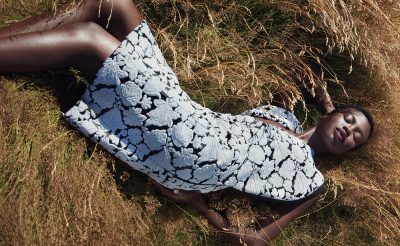It’s a scorching summer’s day on the outskirts of Moscow, hordes of denim-clad teenagers converge upon sweltering tarmac while wheels bore into the post-Soviet, concrete sidewalk. The smell of rubber and tar collide, exposing the scent of youth and freedom. For his first foray into scent cult, fashion designer, Gosha Rubchinskiy shied away from fields and forests instead focussing on skateboard wheels grinding against asphalt for his olfactory offering. It’s a smell that signifies a new era in fragrance.
Perfume is place of paradox. Historically fragrance held a hallowed position in religious ceremonies, while from Persia to China it became the marker of civilised society. However, you could also argue that smell is the least valued of our senses. The prominence awarded to fine dining sees increasingly inexplicable combinations of ingredients- from pansies to goose liver- pander to the taste buds. Similarly, in summer we fly to Salzburg to tune into the audial intricacies of its symphonies or queue patiently outside galleries to admire works by old masters and emerging artists. Our sense of smell, however, has long been left with little to look forward to. In fact, many languages have virtually no vocabulary to describe odours, except in relation to the other senses, so smell is often communicated primarily through clichéd similes and metaphors. And when we consider perfumes, cultivated by man, traditionally, there’s a distinct sliding scale between the clean and the cliché, but today’s avant-garde visionaries like Rubchinskiy are setting fresh parameters that evade and reimagine such elementary confines. Rubchinskiy embarked on his endeavor with perfumer Alexis Dadier and Comme des Garçons, the limitless leaders in visual and sensory risk-taking.
When we consider perfumes there’s a distinct sliding scale between the clean and the cliché, but today’s avant-garde visionaries are setting fresh parameters that evade and reimagine such elementary confines
Since its inception in 1993, Comme des Garçons Parfum have wasted no time in pushing perfume out of its comfort zone. Often labelled as anti-perfumes, referencing obscure inspirations from the trail of incense left by a priest at a Catholic mass, to tar, garbage and soda. Today some 75 scents exist, including their seminal collaborations with cultural icons and institutions as diverse as the Serpentine Galleries, pop star Pharrell Williams and now Russian designer de jour, Rubchinskiy. Although, by design they are not perfumes to be universally adored. “My end goal isn’t always to make the perfume ‘wearable’,” says Punk Perfumer, Killian Wells whose most famous genderless creation, Dark Ride (2015), is a chlorine- inspired scent, designed to recall the Pirates of the Caribbean log flume. “I create virtual reality fragrances capturing places and things that I’m a personal fan of. I love the challenge and payoff of faithfully capturing olfactory experiences. You could describe my work as photography for your nose – instead of a camera I’m using aroma compounds to permanently preserve memories and emotions.” Branching away from fragrances tied to particular stereotypes of class, good taste and womanhood, or winning marketing formulas, since the 1990s trailblazing perfumers like Comme des Garçons have been increasingly looking to recalibrate our scent perceptions in curious and compelling ways.
While olfactory rebels like Rubchinskiy and Wells call upon ambiguous stimuli such as skateparks, experimentation with outlandish ingredients is also becoming increasingly prevalent. Science-driven, Escentric Molecules, broke new ground in 2006; the brainchild of Berlin-based Geza Schön. His cult fragrances embrace synthetic molecules unfound in nature, while Blood Concept, a niche fragrance house labels each of their perfumes according to blood type. “With rapid and constant innovation in all other industries such as healthcare and technology, consumers particularly millennials, were craving a refreshing change in fragrance,” says Wells, who often composes perfumes completely from memory. “I saw this opportunity when I founded Xyrena and our mission has always been to disrupt the way consumers perceive and consume fragrance.” Long left to its stagnant and structured ways, we are entering into an era where perfume epitomises the current phenomenon for freedom and experimentation. It’s time to rip up the rulebook and rethink the way we smell.
With rapid and constant innovation in all other industries such as healthcare and technology, consumers particularly millennials, were craving a refreshing change in fragrance
Killian Wells
Three to Try
Secretions Magnifiques by Antoine Lie
A controversial and sensual scent explosion, Sécrétions Magnifiques, is divisive in that it’s love or hate at first smell. Designed around human secretions of blood, sweat, and saliva, it’s an adrenaline fuelled and animalistic scent that’s certain to become a talking point.
El Cosmico by D.s & Durga
An enchanting outdoor space preserved in perfume, for this scent D.S. & Durga founders David Seth Moltz and Kavi Ahuja Moltz captured the olfactory offerings of El Cosmico, the communal campground in Marfa where guests choose to pitch their tents. The result is a scent concentrated around sumac, creosote shrubs, oak, and pinyon pine to conjure up images of a wild desert, juxtaposed with a hint of campground.
Molecule 04 by Escentric Molecules
Celebrating the pure molecule javanol – derived from sandalwood – it has subtle woody notes designed to blend seamlessly with the natural scent of the wearer. In the other Escentric fragrances a huge amount of the molecule is used but perfumer, Geza Schön felt this would be overpowering with javanol, likening it to the delicate balance of consuming truffles. “A few slices of truffle shaved on top of your pasta are enough to transport you to heaven.”



